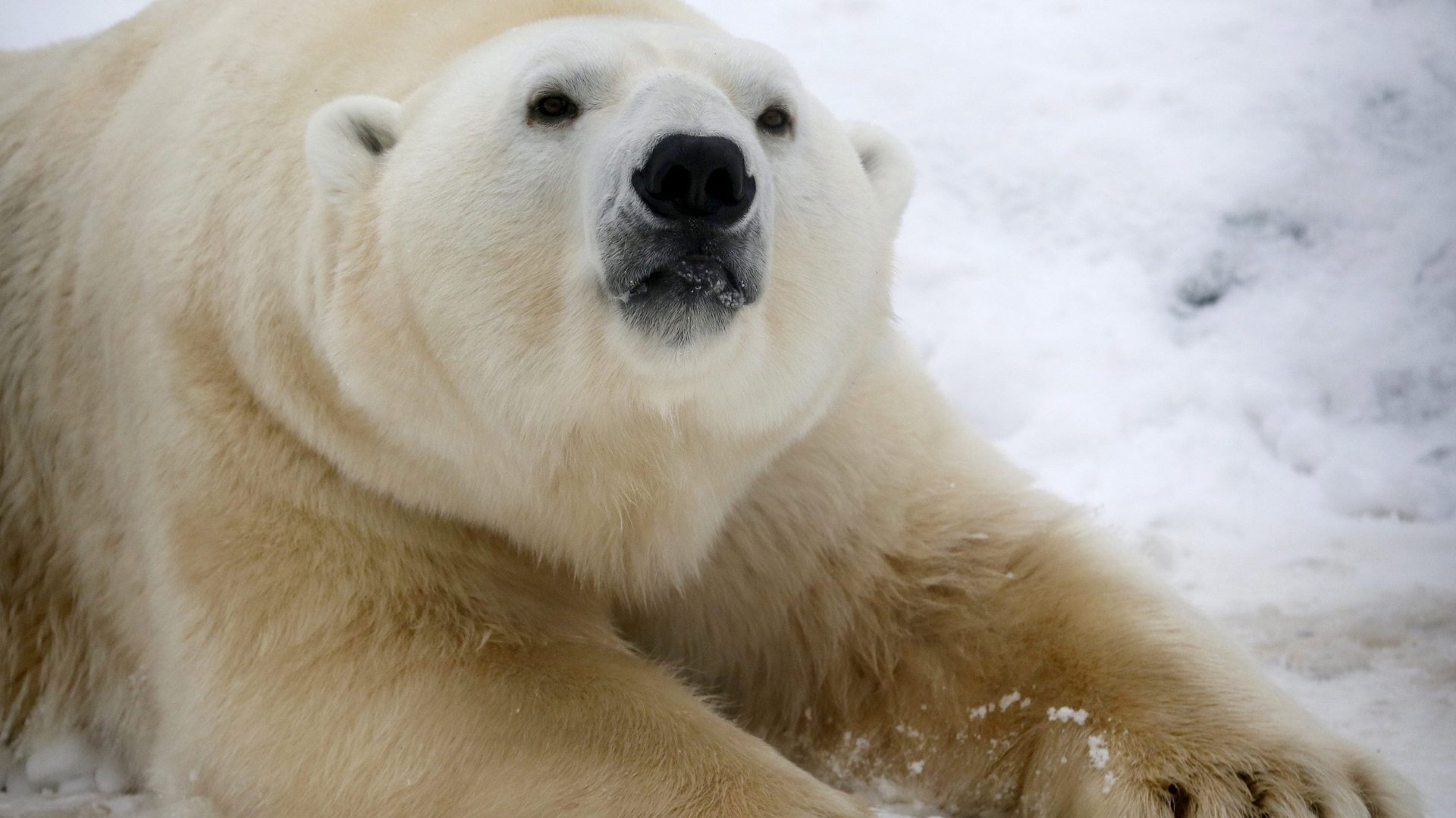People are wildly misinterpreting a “heartwarming” video of a polar bear playing with a dog
By now, you may have seen the new feel-good video making the rounds on the internet featuring a polar bear “patting” a dog on its head in Churchill, Canada. The CBC called the bear a “gentle giant.” The Huffington Post praised its ”cuteness factor.” A Facebook commenter said, “We are fortunate to be able to see with our own eyes how animals of all kinds are capable of love.” The dog’s owner, Brian Ladoon, said the seemingly friendly interaction was “nature’s will.”


By now, you may have seen the new feel-good video making the rounds on the internet featuring a polar bear “patting” a dog on its head in Churchill, Canada. The CBC called the bear a “gentle giant.” The Huffington Post praised its ”cuteness factor.” A Facebook commenter said, “We are fortunate to be able to see with our own eyes how animals of all kinds are capable of love.” The dog’s owner, Brian Ladoon, said the seemingly friendly interaction was “nature’s will.”
There’s just one problem with this heartwarming narrative: That polar bear isn’t expressing love for the dog. It’s playing with its prey.
A follow-up story from the CBC revealed that a polar bear had killed one of Ladoon’s sled dogs just last week. And Ladoon, aware of tourists’ interest in seeing polar bears, keeps his dogs chained up on his property—effectively using them as bait.
But the problem here goes beyond one man’s actions. The viral video demonstrates the dangers of anthropomorphization: the projection of human personalities on animals. Through an anthropomorphized lens, we may interpret a bear lightly patting a dog as feeling affection for the animal. But when we insist on seeing animals this way, we do them a disservice. We assign them the responsibility that comes with being human, including a code of morality that other animals simply cannot follow.
People have only recently begun to recast vicious predators as furry extensions of humanity, according to an analysis by NPR. As nature content has shifted from informative (science documentaries) to entertaining (YouTube videos) over the past decade, our impressions of wild animals have been removed from narrative context. And so we readily accept stories spun to showcase naturally violent animals as surprisingly sweet—perhaps because that’s how we wish the world worked for us.
As Robert Krulwich explains on NPR, “We see them through the heavy filter of our own feelings, our own needs. And our filter for polar bears had flipped. Animals who’d once been proud and vicious had become “delicate, drowning” victims, lonely animals—who now just might need the companionship of a friendly husky—who might come to a backyard, looking for a hug.” At a time when we’re inundated with depressing and often heartbreaking content, it can be refreshing, even therapeutic, to witness two incompatible creatures “loving” each other.
It’s certainly a good thing if we feel invested in the welfare of polar bears, which are in need of our conservation efforts. But we shouldn’t need to pretend they are docile or cuddly in order to spring to action on their behalf.
Our need to see animals through the lens of human behavior isn’t limited to polar bears or predators. Monkeys riding motorcycles, dogs dressed up in clothing, dancing parrots: These are the building blocks of viral content because “anthropomorphism helps us to simplify and make more sense of complicated entities,” according to the Association for Psychological Science. When we perceive a bear as a dog’s friend, it becomes less scary; dressing a monkey in a winter coat makes it look like a human baby, so we ignore its razor sharp teeth.
Our hunger for anthropomorphized animals is further fueled by the fact that, under extraordinary circumstances, unlikely species do in fact form bonds. “A growing pool of animal-behavior research increasingly suggests a greater capacity for and range of emotion on the part of animals than we might historically have imagined,” says veterinarian Jonas Watson, who regularly travels to Churchill to provide medical and surgical care to companion animals. “Bonds can certainly form between disparate and unlikely species, especially when the animals in question have been bonded from a very early age.” A well-known example is the bear, lion, and tiger who were raised together, or the baby hippo who bonded with a 100-year-old tortoise.
But this shouldn’t lead us to discount natural animal behavior, which is very species specific. For example, a circus elephant may have genuinely bonded with the trainer who raised it—but that doesn’t mean the elephant enjoys living in a cage, wearing clothing, or getting beaten with sticks.
The planet and all its creatures, human and non-human, are currently on a fragile precipice. It’s understandable that people would grasp for hope in the form of animals treating each other with apparent kindness. But the best thing we can do for the animals of the world is to appreciate them for what they truly are, and help conserve the unique role that every species plays in the grand ecosystem.